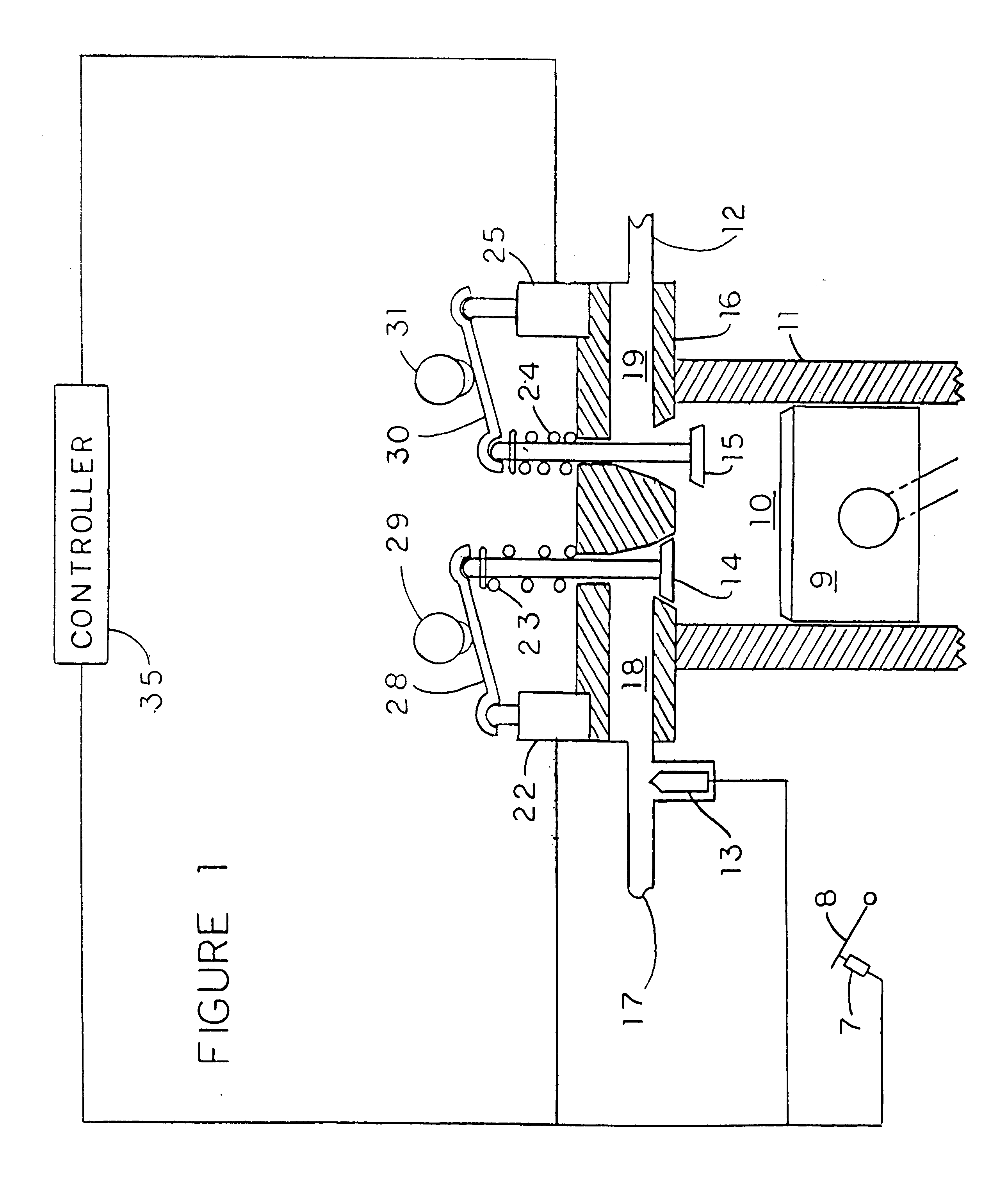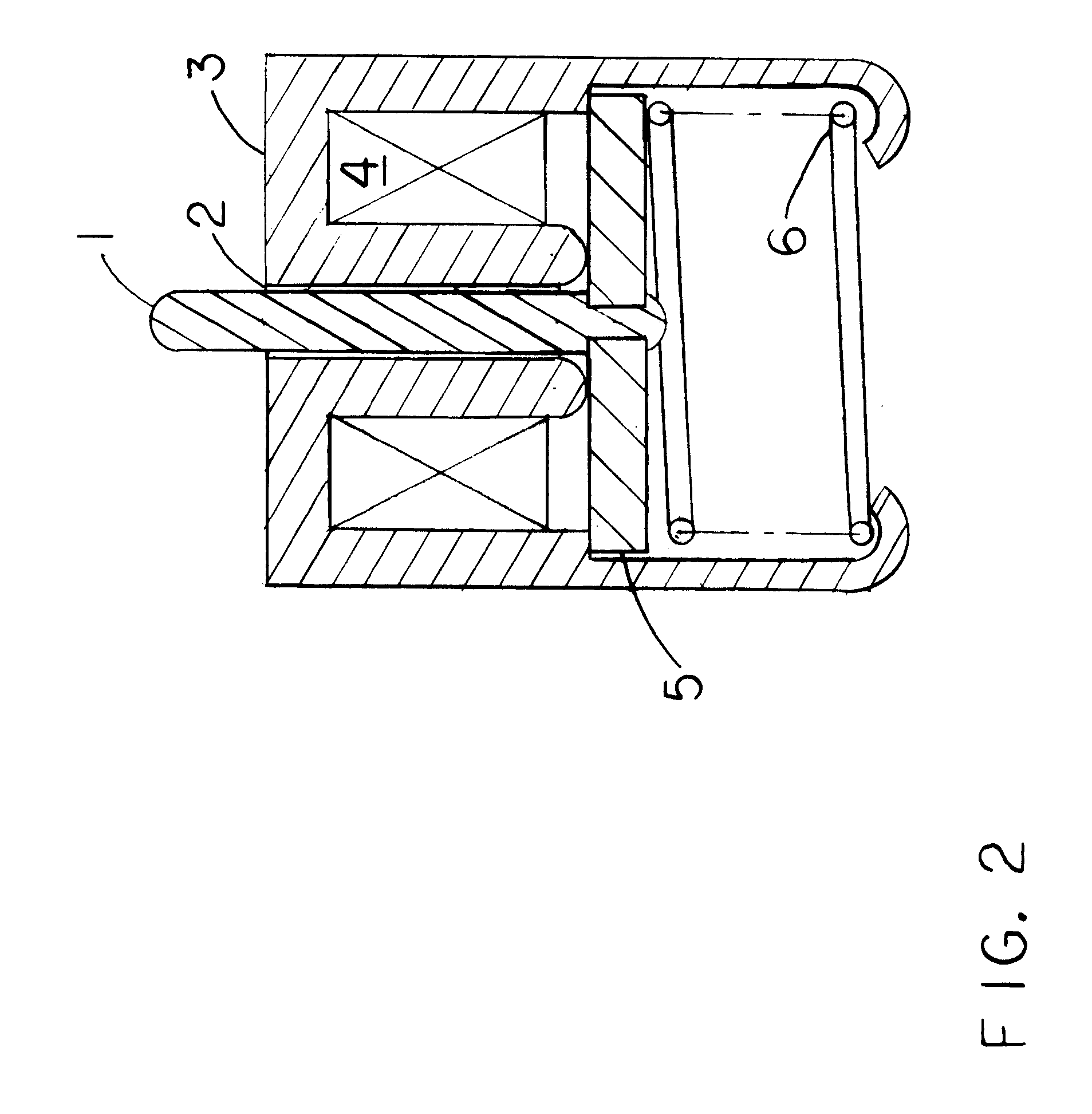Engine valve disabler
- Summary
- Abstract
- Description
- Claims
- Application Information
AI Technical Summary
Benefits of technology
Problems solved by technology
Method used
Image
Examples
Embodiment Construction
FIG. 1 shows a cross section of one cylinder 10 of a vehicle engine with engine block 11, which has a plurality of cylinders. A piston 9 is mounted for reciprocal motion within cylinder 10. A spark plug (not shown) ignites the fuel-air mixture in the usual fashion. Piston 9 is mechanically connected to a crankshaft (not shown) which transforms the reciprocal motion to rotary motion in the usual fashion. Also in the usual fashion, the crankshaft is connected to the wheels of the vehicle through a transmission and differential (not shown). Valve fulcrums 22 and 25 are used to provide engine valve control.
The inputs for controller 35 are an accelerator position sensor 7, and current engine system sensors (not shown). The outputs from controller 35 are an intake valve control 22, an exhaust valve control 25, fuel injector 13, and current engine controls (not shown).
During vehicle operation, when accelerator pedal 8 is depressed or released, controller 35 calculates the power required by...
PUM
 Login to View More
Login to View More Abstract
Description
Claims
Application Information
 Login to View More
Login to View More - R&D
- Intellectual Property
- Life Sciences
- Materials
- Tech Scout
- Unparalleled Data Quality
- Higher Quality Content
- 60% Fewer Hallucinations
Browse by: Latest US Patents, China's latest patents, Technical Efficacy Thesaurus, Application Domain, Technology Topic, Popular Technical Reports.
© 2025 PatSnap. All rights reserved.Legal|Privacy policy|Modern Slavery Act Transparency Statement|Sitemap|About US| Contact US: help@patsnap.com



